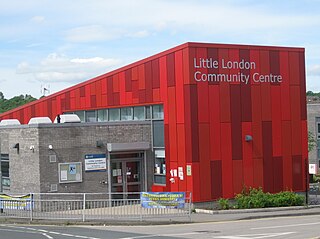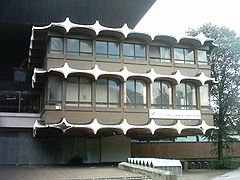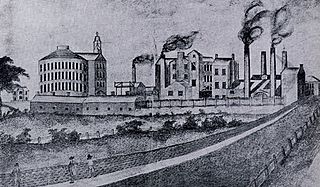
Hunslet is an inner-city area in south Leeds, West Yorkshire, England. It is 1 mile (1.6 km) southeast of the city centre and has an industrial past.

Bramley is a district in west Leeds, West Yorkshire, England. It is part of the City of Leeds Ward of Bramley and Stanningley with a population of 21,334 at the 2011 Census. The area is an old industrial area with much 19th century architecture and 20th century council housing in the east and private suburban housing in the west.

Little London is a residential area of Leeds in England, north of the city centre and Leeds Inner Ring Road. It is so called because in the 19th century it had fashionable housing and interesting architecture comparable to London. In the 1950s and '60s it became largely council housing and now consists of a mixture of high and low-rise flats and housing. The area falls within the Little London and Woodhouse ward of the City of Leeds Council. The area is divided into four estates; Lovell Park, Oatlands, Carlton and the Servias.

Wakefield Westgate railway station is a mainline railway station in Wakefield, West Yorkshire, England. It is 10 miles (16 km) south of Leeds to the west of the city centre, on the Wakefield Line and Leeds branch of the East Coast Main Line.

The Grand Theatre, also known as Leeds Grand Theatre and Leeds Grand Theatre and Opera House, is a theatre and opera house in Briggate, Leeds, West Yorkshire, England. It seats approximately 1,500 people.
Leeds has a strong sporting heritage, with the Yorkshire County Cricket Club and Leeds Rhinos playing at Headingley Stadium, Leeds Tykes playing at The Sycamores, Bramhope and Leeds United F.C. playing at Elland Road. The Headquarters of the Rugby Football League is also based in Leeds. Leeds City Council also offer a wide variety of sport, leisure and fitness sessions both in their leisure centres and the community.
The Commonwealth Pool Lifesaving Championships is an international event where swimmers from around the Commonwealth take part in lifesaving sport events. The championship is under the auspices of The Royal Lifesaving Society which has Her Majesty Queen Elizabeth II as patron.

The Singapore Sports Hub is a sports and recreation district in Kallang, Singapore. The Sports Hub is a 35-hectare public-private partnership that is anchored by the new National Stadium and existing Singapore Indoor Stadium, and also incorporates a new aquatics facility, indoor sports hall, water sports centre, public sports facilities, and retail.

The John Charles Centre for Sport is a multi-purpose sports facility in South Leeds, West Yorkshire, England. It consists of a the South Leeds Stadium, an aquatics centre, indoor athletics centre, and tennis centre. In 2007 the complex was renamed in honour of John Charles (1931–2004), the former Leeds United, Juventus and Wales footballer.

This is a list of halls of residence both on and off campus at the University of Leeds in Leeds, England.

Cross Green is a mainly industrial area of Leeds, West Yorkshire, England. It is around 1 mile (1.6 km) on a hill to the south east of Leeds city centre, with the A63 road running through the middle and dividing it into a residential estate with playing fields and housing to the north, and a large industrial estate to the south. The area lies in the LS9 Leeds postcode area between Osmondthorpe, Richmond Hill and Hunslet.

The architecture of Leeds, a city and metropolitan borough in West Yorkshire, England, encompasses a wide range of architectural styles and notable buildings. As with most northern industrial centres, much of Leeds' prominent architecture is of the Victorian era. However, the City of Leeds also contains buildings from as early as the Middle Ages such as Kirkstall Abbey, one of Britain's best preserved ruined Cistercian monasteries, as well as examples of 20th century industrial architecture, particularly in the districts of Hunslet and Holbeck.

East Leeds Family Learning Centre was a large Adult Education Centre in Seacroft, Leeds, England. The buildings were originally used as a secondary school, Foxwood School. The school is notable for its use for filming The Beiderbecke Trilogy between 1984 and 1988. Demolition of the buildings began in December 2009 and was completed early in 2010.
The Hunslet Grange Flats was a complex of deck-accessed flats in Hunslet, Leeds.



















